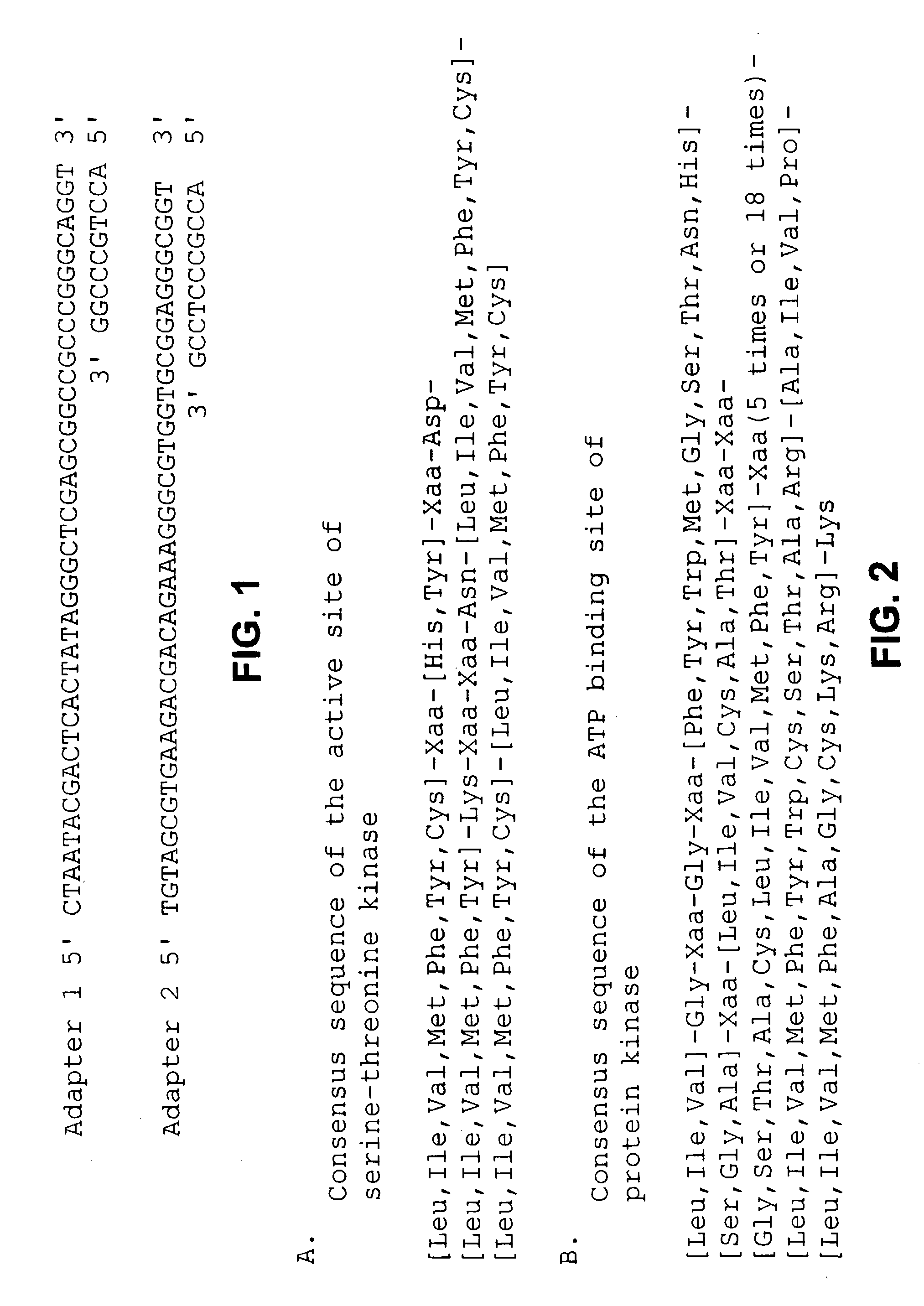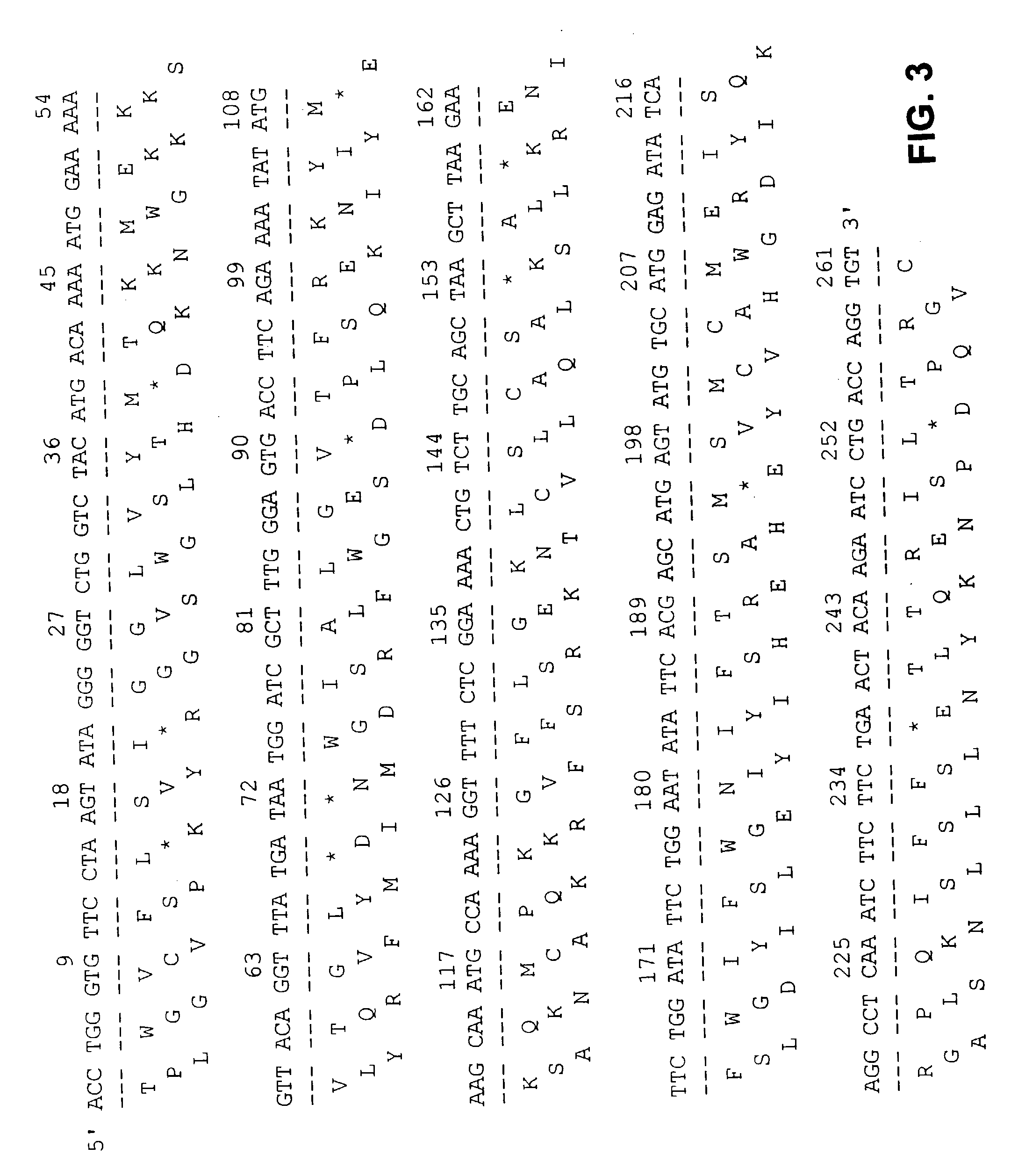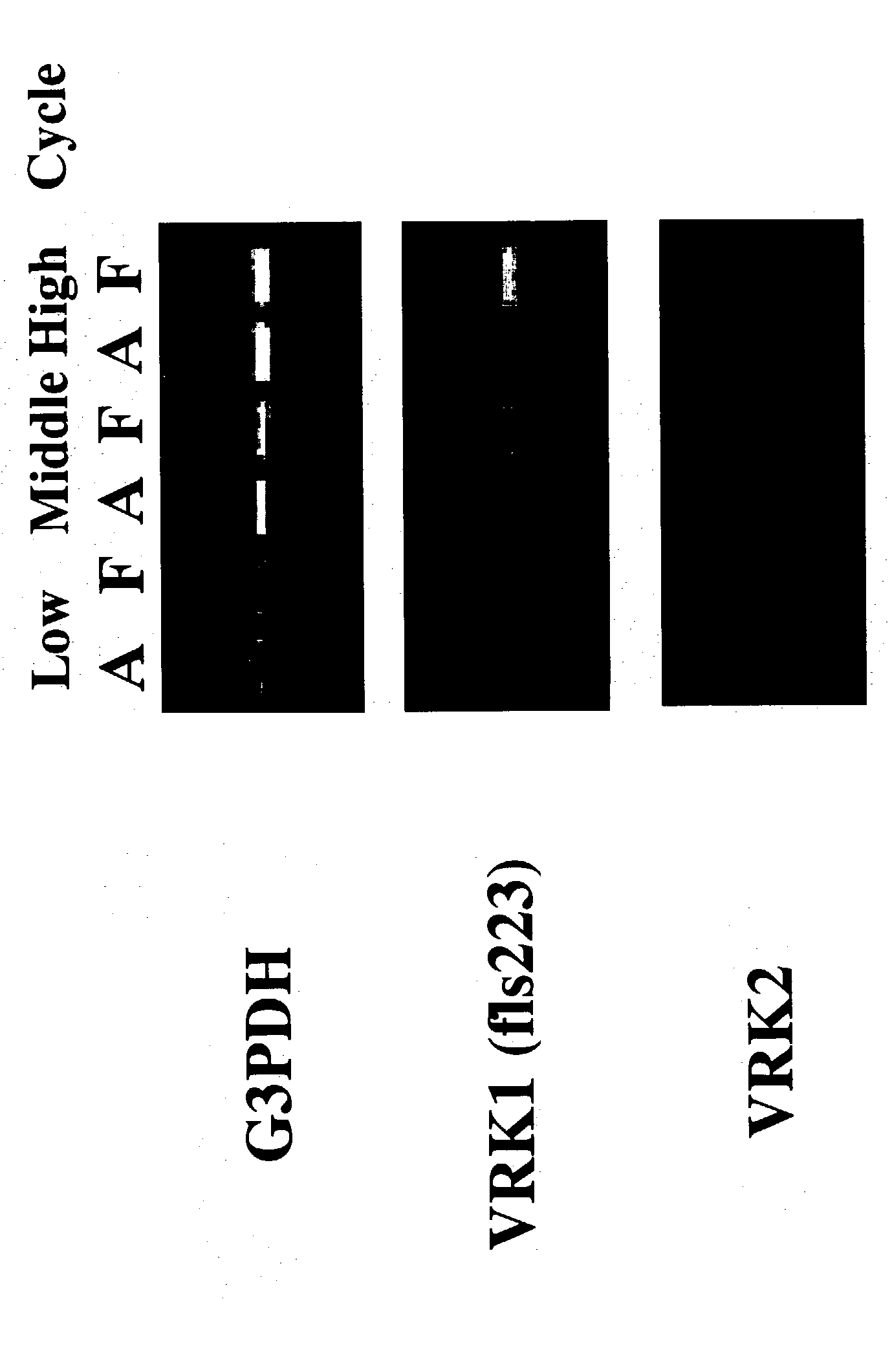Novel serine-threonine kinase gene
a serine-threonine kinase and gene technology, applied in the field of new serine-threonine kinase gene, can solve the problem of not fully understanding the gene group, and achieve the effect of improving the understanding of the gene group
- Summary
- Abstract
- Description
- Claims
- Application Information
AI Technical Summary
Problems solved by technology
Method used
Image
Examples
example 2
[0055] Sequence Analysis
[0056] Plasmid DNA prepared by the alkali SDS method or products of colony PCR were used as a template for sequence reaction. Sequence reaction was performed by the cycle-sequencing method using the ABI PRISM.TM. Dye Terminator Cycle Sequencing Ready Reaction Kit With AmplyTaq DNA Polymerase, FS, and the result was analyzed by the ABI 377 DNA Sequencer.
[0057] Colony PCR was performed as follows. Colonies carrying recombinant vectors were directly suspended into PCR reaction mixtures that contain vector primers, "M13 P4-22 primer" (SEQ ID NO: 9) and "M13 P5-22 primer" (SEQ ID NO: 10). After PCR reaction, amplified insert DNA was separated from unreacted primers and nucleotides by gel filtration or the like, and used as a template for sequencing.
[0058] As a result, the clone fls223 (261 bp) (later renamed "VRK1") was found to be able to encode an amino acid sequence (FIG. 3) that contains the consensus sequence of the active site of serine-threonine kinase ([Le...
example 3
[0059] RT-PCR Assay
[0060] Using polyA.sup.+ RNA extracted from fetal and adult livers, single-stranded cDNAs were synthesized by the standard method with SUPERSCRIPT.TM. II RNase H.sup.- Reverse Transcriptase (GIBCO BRL). Some of the cDNAs were used as a template for RT-PCR analysis of fls223. PCR was performed using TaKaRa Taa (TaKaRa) as Taq polymerase by the hot-start method, where the reaction was started by adding TaqStart.TM. Antibody (CLONTECH). Primers "FLS223 S1 primer" (SEQ ID NO: 11) and "FLS223 A1 primer" (SEQ ID NO: 12) were used to amplifyfls223.
[0061] The G3PDH (glyceraldehyde 3-phosphate dehydrogenase) gene, which is a housekeeping gene equally expressed in various tissues and known to be influenced only slightly by various inducers on its expression, was used as a control. G3PDH was amplified using the primers "hG3PDH5' primer" (SEQ ID NO: 13) and "hG3PDH3' primer" (SEQ ID NO: 14). RT-PCR analysis confirmed that the clone fls223 is strongly expressed in fetal liver,...
example 4
[0062] Cloning by Rapid Amplification of cDNA End (RACE)
[0063] The Marathon.TM. Ready cDNA (CLONTECH) or cDNA prepared by the Marathon.TM. cDNA Amplification Kit (CLONTECH) was used as a template for 5' RACE and 3' RACE (Chenchik A. et al., CLONTECHniques X, 1, 5-8, 1995).
[0064] The primers described above, "FLS223 S1 primer" (SEQ ID NO:. 11) and "FLS223 A1 primer" (SEQ ID NO: 12), were used for 5' RACE and 3' RACE of VRK1fls223. Using a combination of these primers and a primer AP1 (SEQ ID NO: 15), corresponding to the adapter of the template cDNA, tThe reaction was performed with a combination of these primers and a primer AP1 (SEQ ID NO: 15), corresponding to the adapter of the template cDNAbasically consisted of a reaction at 94.degree. C. for (2 minutes); five cycles of reactions at 94.degree. C. for (30 seconds) and at 68.degree. C. (4 minutes); and 30 cycles of reactions at 94.degree. C. for (30 seconds), 62.degree. C. for (1 minute), and 72.degree. C. for (3 minutes;) and fo...
PUM
| Property | Measurement | Unit |
|---|---|---|
| temperature | aaaaa | aaaaa |
| temperature | aaaaa | aaaaa |
| temperature | aaaaa | aaaaa |
Abstract
Description
Claims
Application Information
 Login to View More
Login to View More - R&D
- Intellectual Property
- Life Sciences
- Materials
- Tech Scout
- Unparalleled Data Quality
- Higher Quality Content
- 60% Fewer Hallucinations
Browse by: Latest US Patents, China's latest patents, Technical Efficacy Thesaurus, Application Domain, Technology Topic, Popular Technical Reports.
© 2025 PatSnap. All rights reserved.Legal|Privacy policy|Modern Slavery Act Transparency Statement|Sitemap|About US| Contact US: help@patsnap.com



